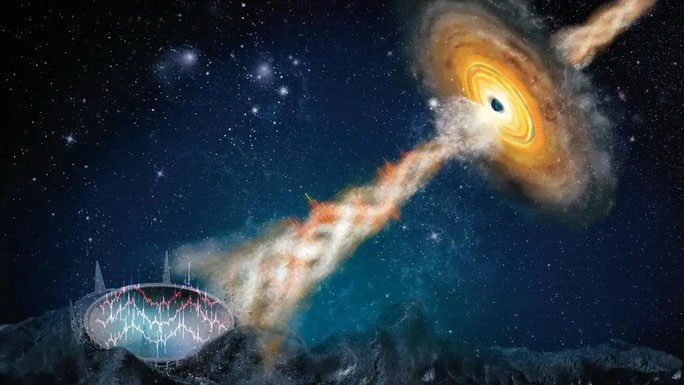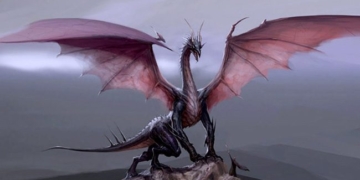A recurring radio signal has been detected almost periodically from a peculiar black hole known as GRS 1915+105, confirmed by an international team of scientists.
The mysterious radio signal was captured by the Five-hundred-meter Aperture Spherical Telescope (FAST), located in the Pingtang County of Guizhou Province, China, and represents a type of signal never before seen in the realm of “monster” black holes.

Graphic depicting a black hole transmitting a strange signal to the FAST system, one of the strongest radio telescopes in the world – (Image: Wuhan University).
This black hole is a stellar-mass black hole, weighing approximately 10 times that of the Sun. Because it is voraciously consuming material, it shines like a star when viewed from Earth, thus categorizing it as a “black hole,” with “stellar” distinguishing it from more commonly known supermassive black holes.
The international team of scientists, led by Professor Wei Wang from Wuhan University (China), has carefully studied this “monster” due to the peculiar signals it emits. These signals are categorized as quasi-periodic oscillations (QPO).
According to Professor Wang, such signals do not always exist and only appear under special physical conditions. The team was fortunate to capture the signals in January 2021 and June 2022, allowing them to recognize that the light curve changes semi-periodically about every 20 to 50 minutes.
Astronomy physicist Bing Zhang from the University of Nevada, Las Vegas (UNLV, USA), a co-author of the study, noted that this unique signal could provide the first evidence of a jet stream emanating from a stellar-mass black hole in the galaxy.
The intervention of an unknown jet stream has created the peculiar cycle of the signal, making it seem as though it is trying to send a coded message to us at a steady rhythm.
Of course, astronomers believe that, in any case, the radio signal that seems to “tease” us, akin to that of extraterrestrial communication, is certainly just an interesting coincidence.
This research has just been published in the journal Nature, with contributions from Wuhan University and UNLV, along with 11 other academic centers around the world, including the National Astronomical Observatories of China.
- The Thrilling Story of Juliane Koepcke – ‘I Was the Only Survivor’
- The Ancient Tomb of the Granddaughter of the Chinese Empress and the Mystery of the Four Characters “The One Who Opens Will Die” on the Coffin Lid
- Workers Breaking Mountains to Build Tunnels Discover a Strange Black Hole, Experts Spend 3 Months Digging to Uncover a ‘Treasure’


















































